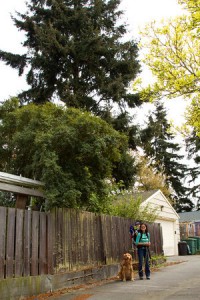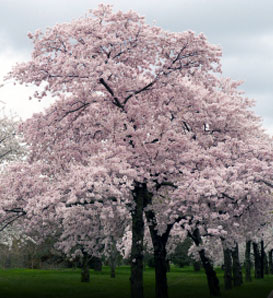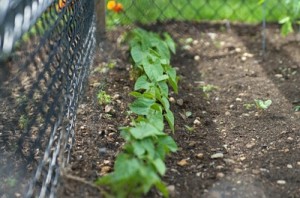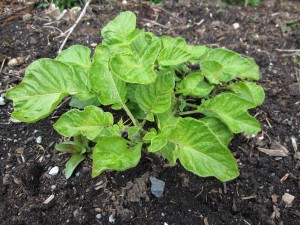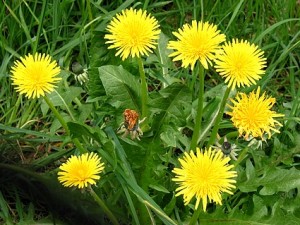 One of the most frequent questions we get at Ecoyards is how to control weeds organically. The truth is, there’s no easy way to get rid of dandelions, shotweed, knotweed, and other nasties, especially if you don’t want to use herbicides. Our favorite tools are our hands and standard garden tools, like a hori hori, trowel or hoe. You also need a lot of persistence and a little knowledge about the type of weed you’re dealing with.
One of the most frequent questions we get at Ecoyards is how to control weeds organically. The truth is, there’s no easy way to get rid of dandelions, shotweed, knotweed, and other nasties, especially if you don’t want to use herbicides. Our favorite tools are our hands and standard garden tools, like a hori hori, trowel or hoe. You also need a lot of persistence and a little knowledge about the type of weed you’re dealing with.
There are annual weeds that grow, flower, set and die each year, and perennial weeds that live and return for many years. Annual weeds spread only by seed, so the best way to kill them is to pull them before they produce even more seeds – and to continue pulling them several times. The reality is that you’re never going to completely eliminate them, but if you’re persistent you can stay on top of it. Pull them early, when they’re young and before they set seed: tackle winter annual weeds such as common chickweed when they germinate in late summer, and get spring annual weeds such as common lambsquarters when they germinate in the spring. Annual weeds tend to have short roots, so they’re easy to pull or hoe. The downside is that annual weeds produce thousands of seeds, and the seeds tend to persist for a very very long time in soil. Avoid deep hoeing or rototilling, as that can bring up seeds buried in the ground.
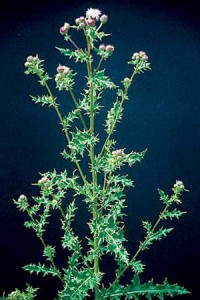
Canada thistle
Perennial weeds can spread by seed (dandelion) or through a creeping rooting system (such as Canada thistle or quackgrass). The best way to get rid of perennial weeds is to pull them early, typically in the first several weeks of germination. Get them before they’ve developed an extensive root system that can store energy. When you miss this window, it’s an uphill battle. In this case, you can try to exhaust them to death by depleting their energy; frequent mowing, for example, to cut the tops of dandelions can help exhaust the amount of energy stored below ground. For perennial weeds, you have to dig up the entire root system so rototilling only breaks up the plant and spread the weed; Canada thistle can produce a new plant with a root section as small as a quarter of an inch.
The best way to control weeds is to prevent them in the first place. Get them early, get them often. Try to weed, if possible, on a sunny dry day so that the weeds you pull will dry out and die. We also can’t stress enough the importance of having a good thick layer of mulch, whether bark, compost or a mixture of both, to suppress weeds. Mulches also conserve soil moisture and reduces soil erosion. A good mulch applied annually is about the easiest thing you can do to keep weeds at bay. Mulching and regular monthly maintenance are two ways we control weeds organically for our clients. Contact us to find out more about our maintenance services.
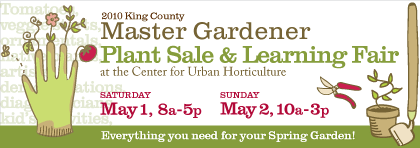 We’ve volunteered at the Master Gardener plant sale in previous years, but will be out of town this weekend. The sale runs from 8 a.m. to 5 p.m., Saturday, May 1 and 10 a.m. to 3 p.m. Sunday, May 2. You’ll find a wide selection of perennials, ornamentals, shrubs, trees, vines and edibles, including famous tomato starts, from Master Gardeners and local growers.
We’ve volunteered at the Master Gardener plant sale in previous years, but will be out of town this weekend. The sale runs from 8 a.m. to 5 p.m., Saturday, May 1 and 10 a.m. to 3 p.m. Sunday, May 2. You’ll find a wide selection of perennials, ornamentals, shrubs, trees, vines and edibles, including famous tomato starts, from Master Gardeners and local growers.  The second plant sale is one that vegetable gardeners can’t miss. Seattle Tilth’s annual plant sale is one of the best in town. You can choose from over 50 varieties of tomatoes and 20 different kinds of peppers. I always leave this sale with a handful of edibles, including rare pumpkin, eggplant, cucumber and other starts that you just can’t find anywhere else.
The second plant sale is one that vegetable gardeners can’t miss. Seattle Tilth’s annual plant sale is one of the best in town. You can choose from over 50 varieties of tomatoes and 20 different kinds of peppers. I always leave this sale with a handful of edibles, including rare pumpkin, eggplant, cucumber and other starts that you just can’t find anywhere else.
